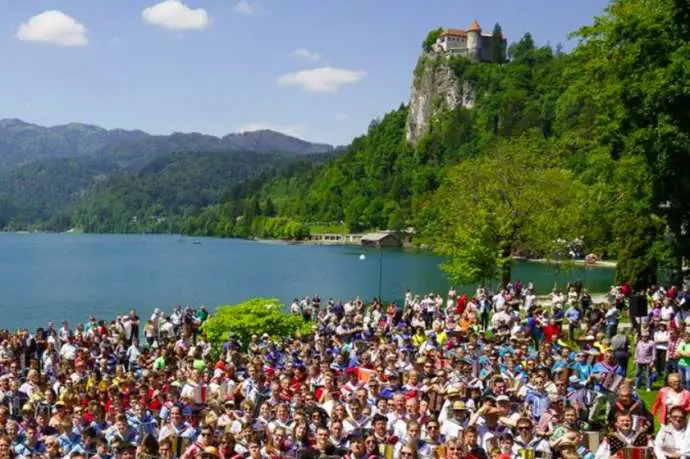STA, 24 December 2019 - For years, Slovenia had been focussing on pushing tourism figures up, boasting new records year after year. Now, its main tourist destinations are slowly starting to take a step back. Acknowledging the grievances of local population and the environmental impact of mass tourism, their goals for the future are starting to change.
Ljubljana, where new hotels are popping up and old buildings in the city centre are being repurposed into accommodation facilities for rental on platforms such as Booking.com and AirBnB, has heard many complains from locals about the negative effects of tourism.
Bothered by the crowd and high prices, people have even started moving out of the city centre.
Ljubljana Tourism, the local tourism office, has taken notice and its vision for the future no longer speaks only of the city as a tourist destination but also of a city "with a high quality of living and a pleasant atmosphere for all its inhabitants, visitors and tourists".
It has also included questions about the negative effects of tourism in its regular surveys among the city's residents "because we believe visitors can only be happy here if the residents are happy."
Ljubljana will now be striving to "increase the added value of tourism, grow sustainably and offer high quality innovative products" to attract tourists in search of "green boutique destinations".
Even more far-reaching impacts of excessive tourism have also started to affect the lakeside resorts of Bled and Bohinj.
This summer, a press conference was called by the Environment Agency, the Triglav National Park, Turizem Bled and Turizem Bohinj to warn of excessive mass tourism and its effect on the quality of water in the lakes.
Since the 2016 tourism boom, the ecological status of Lake Bled - the status of water plants and animals - has deteriorated from good to moderate, the officials said. In Lake Bohinj too, analyses of microorganisms revealed a serious impact of swimmers on water quality.
Andrej Arih from the Triglav National Park said mountain lakes where swimming is not allowed were also affected by parking and camping in the area, while wild animals were being disturbed.
"We the tourism officials are aware of the value of our natural assets and we are becoming environmentalists ourselves," said Klemen Langus from Turizem Bohinj.
Both Bled and Bohinj are now restricting access to the lakes by car and introducing measures to improve the sewage system and waste collection.
Faced with the reality of a rapid tourism development, many other towns in Slovenia are staring to embrace the green concept of tourism as well, and are adjusting their services to attract high-end guests to slowly turn away from mass tourism.
As things stand, Slovenian tourism is in for another record year in terms of arrivals and nights by foreign tourists, although the pace is slowing down. Last year saw almost 6 million tourist arrivals and more than 15 million overnight stays.
A total of 5.2 million tourists were recorded in Slovenia in the first nine months, generating 13.2 million overnight stays, with the numbers going up 5.7% and 1.9%, respectively over the year before.
The number of foreign tourists was up by 7.1% and the number of overnight stays they generated by 3.5%.







